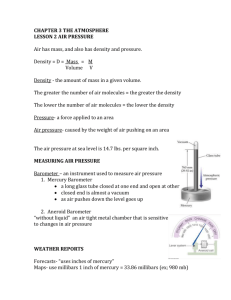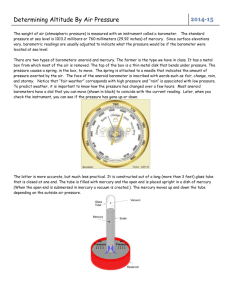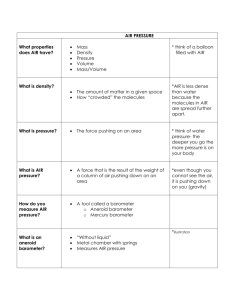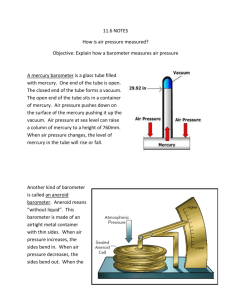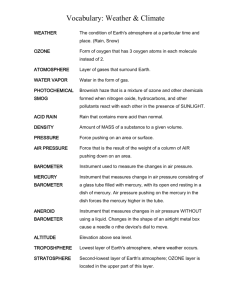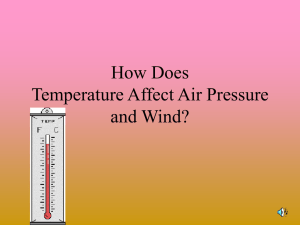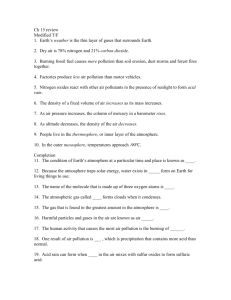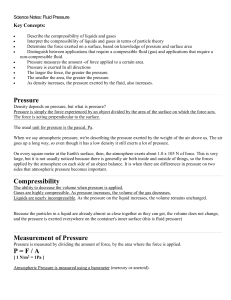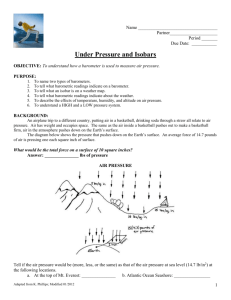Pressure lab guide
advertisement
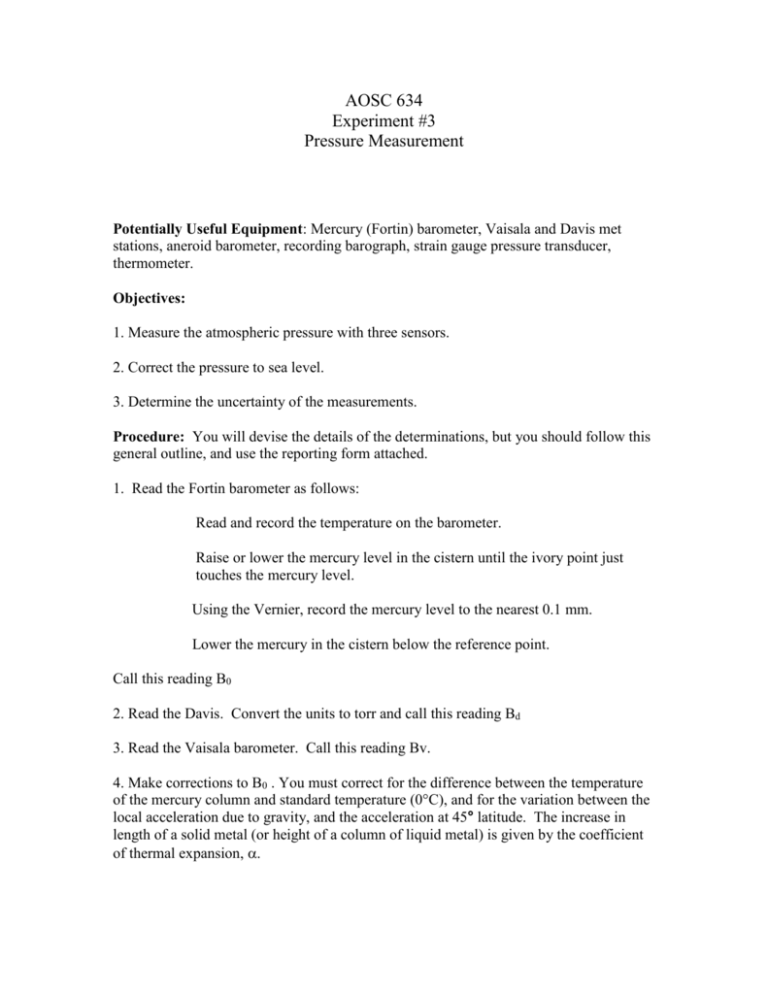
AOSC 634 Experiment #3 Pressure Measurement Potentially Useful Equipment: Mercury (Fortin) barometer, Vaisala and Davis met stations, aneroid barometer, recording barograph, strain gauge pressure transducer, thermometer. Objectives: 1. Measure the atmospheric pressure with three sensors. 2. Correct the pressure to sea level. 3. Determine the uncertainty of the measurements. Procedure: You will devise the details of the determinations, but you should follow this general outline, and use the reporting form attached. 1. Read the Fortin barometer as follows: Read and record the temperature on the barometer. Raise or lower the mercury level in the cistern until the ivory point just touches the mercury level. Using the Vernier, record the mercury level to the nearest 0.1 mm. Lower the mercury in the cistern below the reference point. Call this reading B0 2. Read the Davis. Convert the units to torr and call this reading Bd 3. Read the Vaisala barometer. Call this reading Bv. 4. Make corrections to B0 . You must correct for the difference between the temperature of the mercury column and standard temperature (0°C), and for the variation between the local acceleration due to gravity, and the acceleration at 45° latitude. The increase in length of a solid metal (or height of a column of liquid metal) is given by the coefficient of thermal expansion, . LT/L0 = (1 + T) For brass =~1.84x10-5, but for the mercury, is a function of temperature: =~(181792~+~0.175T~+~0.035116T 2) x 10-9 T is expressed in oC. To convert to standard temperature, you must subtract the expansion in the brass from the expansion of the mercury, and subtract the total from the height of the column. Alternatively, use the table hanging near the barometer. Call the new pressure Bt. To correct for local gravity use C = Bt (gL –g0)/g0 Where C is the correction; g0 = 980.665 s-2; and gL is the local gravity. This you can also get from the tables, or calculate for latitude, L, as follows. gL = 980.6160(1─ 0.0026373 cos 2L + 5.9 x10-6 cos22L) cm s-2 Actually, an additional small correction must be applied for the reduction in g with altitude. One should subtract 3.086x10-4 cm s-2 for each meter above sea level, but we can safely ignore this correction in College Park. Call the final, station pressure Bs. 5. Correct the station pressure to sea level. To do this you will need to calculate the scale height for today's temperature, and measure the elevation of the barometer above sea level. The ground under the meteorological observatory out by the parking lot is at 110 ft above sea level. Use the new rooftop lab to find the difference in altitude between that surface and the level of the mercury in the reservoir in the barometer in the Commons Room. 6. Find the correction needed to bring the Davis and the Vaisala barometers in line with the mercury barometer. Hints: The reference temperature for the mercury column is always 0oC, but the reference temperature for the brass scale is 0oC for metric measurements, but 62oF for the scale. This produces slight differences when converting from inches to mm. For the Report: Include a discussion of the relative merits of each pressure transducer, and a thorough error analysis. To give you a feel for the uncertainty involved in calculating the geostrophic winds from pressure gradient forces, consider two barometers, one at Dulles and one in Baltimore. If each barometer has an uncertainty of ± 0.1 hPa, then the total error could easily be 0.2 hPa. What error would this introduce into the calculated geostrophic wind speed, Vg? Vg = P/S (2ρ Ω sin φ) ־1 Where P is the pressure difference, S is the distance, ρ is the air density, rotational speed, is (2/24) h -1, and φ is the latitude.
